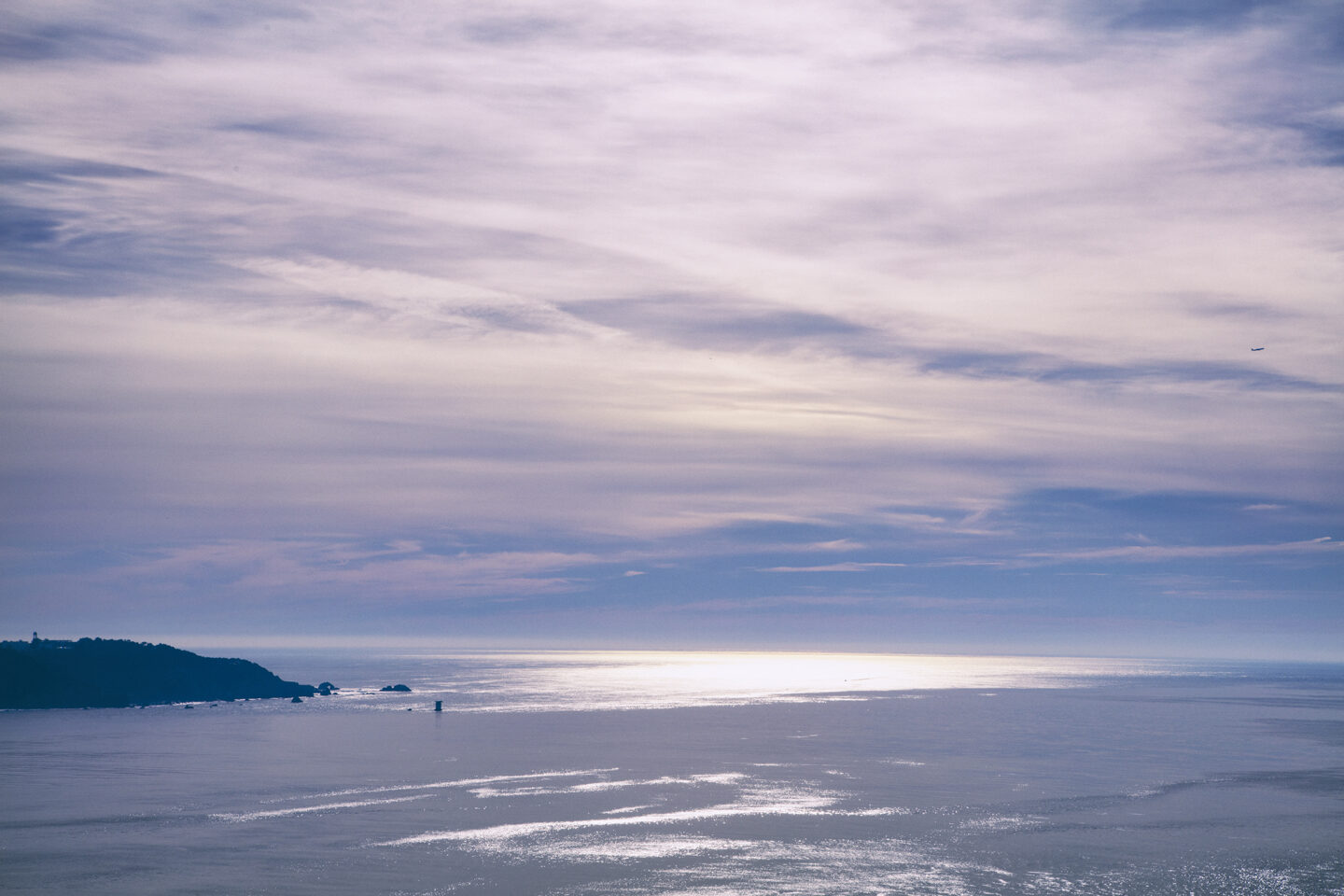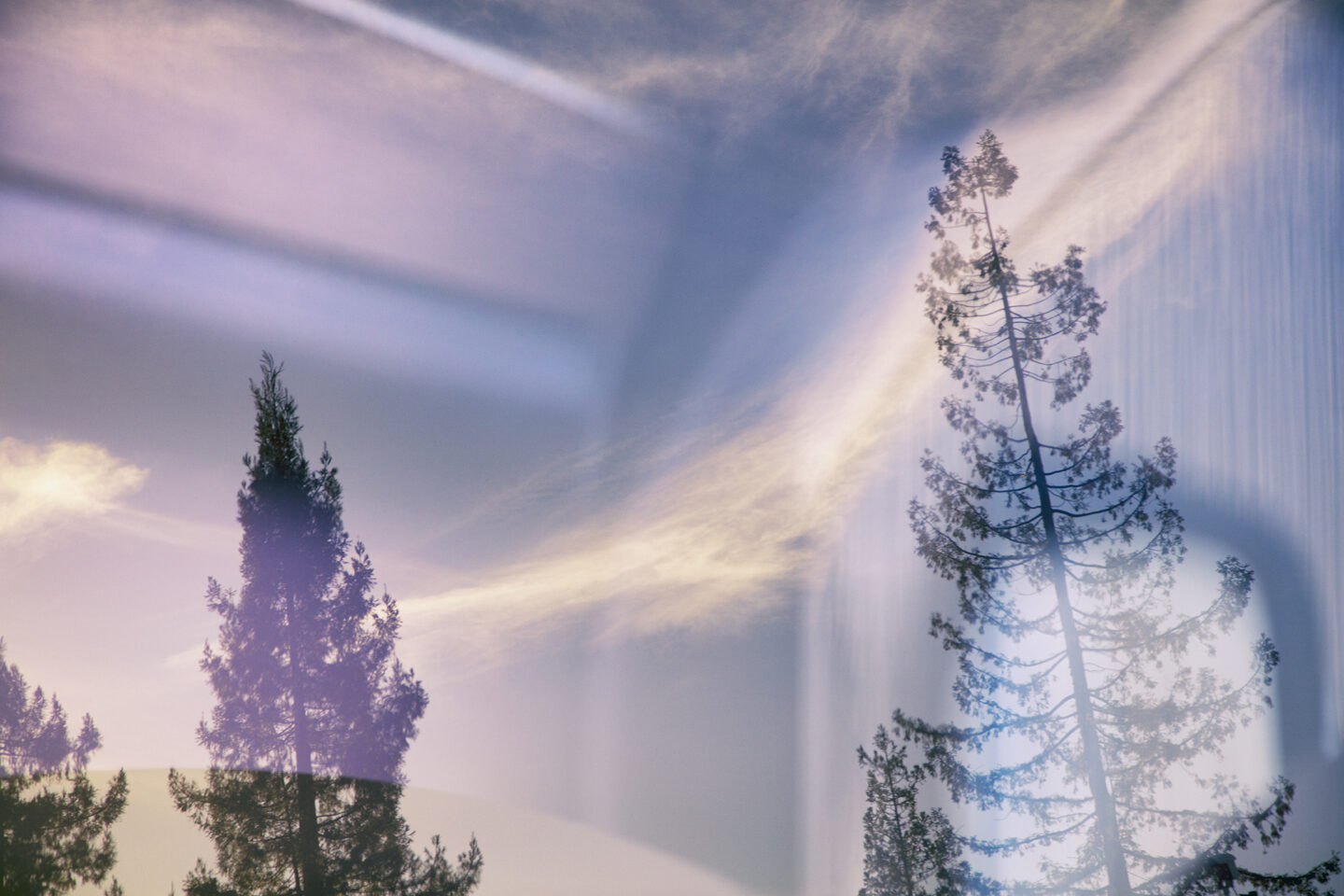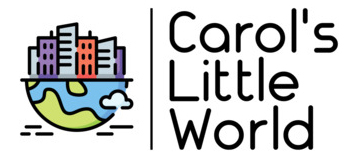

A strange thing can happen when you sit in a moving car and look out the window. The scenery moves by so rapidly that you don’t always register what you are looking at as you go. If you take pictures in this situation, what can happen is that the camera actually allows you to capture something you might not be able to see with your naked eye. Supposing you were to drive past a tree and a building, for example. Your brain will register that it is moving but it won’t be able to process all of the details about the tree or the building. You will be left with a sense that you drove past a few things, you had the experience of seeing them, but you didn’t really “see” them, you didn’t study them. It’s almost like peripheral vision or seeing out of the “corner of your eye.” You just got a sense of moving by the tree and building as you were traveling. It’s only once you process the images that you can see all of the details in the tree and building. The camera allows you to stop the action of moving and visually process what you saw.
Cameras often work as our eyes do. They have a shutter that comes down, much like an eyelid, and a lens much like our own lens, but there is one way, one way in particular, they are very different from our eyes. Light can accumulate on a camera, on the film or on the digital sensor. That is to say, if you were to leave a camera “open” the light will build up and collect as long as the camera remained open. Our eyes work rather differently from this, we have rods and cones and, as the scene grows darker, our eyes try to adjust and we actually lose detail. We give up the ability to see and process details in favor of seeing larger shapes for our safety. This is why you can sometimes stub your toe on the coffee table in the dark. Your brain “sees” the big blob of a shape, the coffee table, but can’t see all of the details, such as what color it is or where the legs on it are located. All you get is a big blob because the room is too dark for your eyes to see any more than that. There’s no accumulation to speak of here, it’s just blobs and shapes instead of details and colors.
These two images were crafted with this in mind. The first image shows the tide moving. Tide is literally the passage of time in a visual format. The second image was shot from a moving car. What both of these images have in common is that they are in essence time lapse images; they portray in part the passage of time.
There are a lot of emotions that have a nebulous quality about them relating to time. Have you ever felt like you knew things were starting to turn? Or maybe the feeling that you left something behind but you don’t quite know what it is? You can’t quite remember something, it’s on the tip of your tongue, you just need a little bit more time to remember it? As an artist, I love exploring the concept that time is a sort of “fifth wheel” in our emotions. It’s always there, even as we try to disregard it. We pay it little mind yet it shapes us in many ways.
My eyes explore this “edge of time,” and find it glorious in many ways. That’s what I try to capture in this work. I hope that maybe you’ll look at time in a new way too. My eyes have seen the edge of time. It was beautiful, it made me think about things in a new way, and now I’m sharing it with you.
Until next time…
